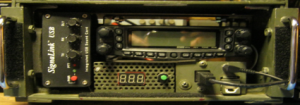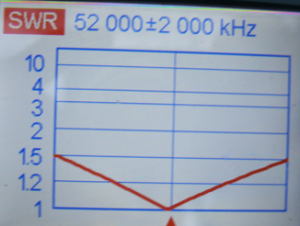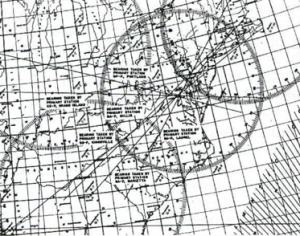Jeff Fuller
WB6UIE
Spring is here at last (hopefully) and with it an opportunity
to explore new trails, new modes and new frequencies. Like many of
us, I’ve been stuck in my comfort zone on two meters for ARES and
public service events. What about a backup in case one or more of
our friendly repeaters goes off the air?
Six meters may be a good choice for that backup. It falls into
an interesting part of the spectrum known as LVHF (low VHF) whose
characteristics straddle those of of both HF and VHF. Its ability
to diffract around obstacles gives it somewhat greater range than
two meters. And under sporadic E conditions, paths of 1000 miles
or more are common.

How to get on six meters? If you have a modern HF rig, chances are it already has 6 meters. If not, multiband VHF transceivers are available for about the price of a good handheld. For example Yaesu’s FT-8900 offers FM in the 10,6,2 and 440 bands in a mobile package with selectable output powers of 5 through 50 watts. Adding
a PVC shell, rubber feet, and modem (above) yields a compact voice
and data package suitable for desktop, mobile, or backpack use.


What about an antenna? Some
commercial four band choices are
available but pricey. Since I
already have a 2m/440 mobile, I
decided to add a 6 meter vertical
and splitter. For about $15, I
found a surplus 52 inch whip
(just shy of 1/4 wave on six
meters)with spring base. After
adding a two turn inductor, it
tuned up nicely (left).

showing the location of a clandestine transmitter in Washington, DC on December 9, 1941, two days after Pearl Harbor.
Now for this month’s history lesson. Many of us are familiar with the WWII contributions of hams to SIGINT, radar, and other technical fields. How many are familiar with a little known part of FCC called RID
(Radio Intelligence Division)? Tasked with locating transmissions of enemy agents, RID established a network of fixed and mobile radio direction finders (right). You can learn more about RID in this fascinating history
by George Sterling, W3DF “The History of the Radio Intelligence Division”
Want to learn more about direction finding and an interesting segment of our hobby known as ARDF? Join us for a presentation by Larry, W8ANT, at our April club meeting. Hope to see you there!